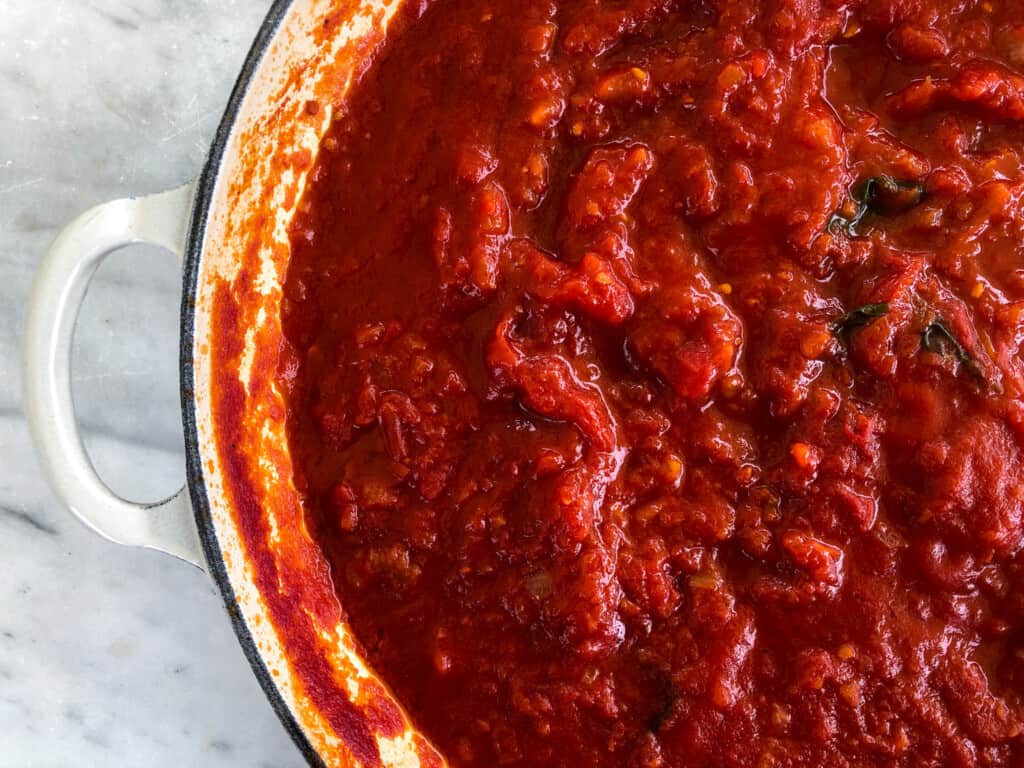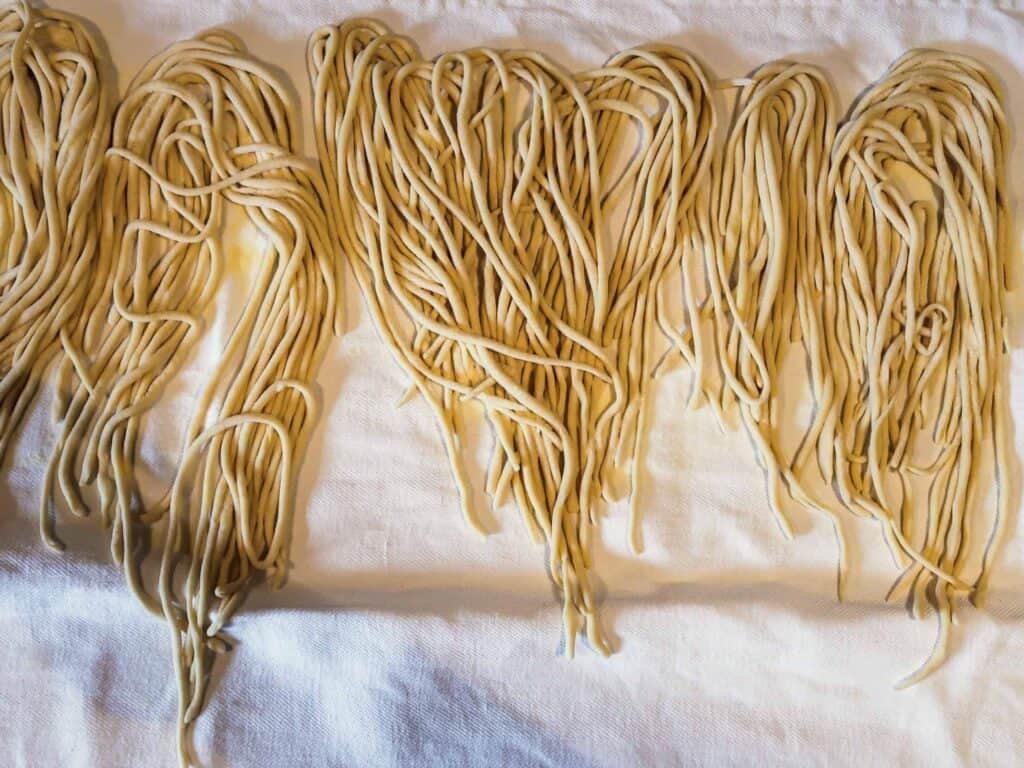Last updated on April 19th, 2024
Did you know that real Parmesan cheese is considered the king of all cheeses? And being king, it comes with a hefty price tag. So why would you throw the precious rind out?
Well, you wouldn’t, of course! But what are some uses for parmesan rind? In this article, I will go over uses for parmesan rinds based on my family’s favorite weeknight meals.
If you love eating Italian food or cheese, you probably eat a lot of parmesan, just like my family. Don’t ever throw it away though! Read on to learn my top five uses for parmesan rind!
If you want to learn more about storing and using a parmesan rind, read my in depth guide of What to Do With a Parmesan Rind – Cook Like An Italian! And make sure you know How to Pronounce Parmigiano Correctly.
Jump to Section
Use Parmesan Rind In Risotto

Using parmesan rind in risotto is by far my favorite way to use leftover parmesan rinds. It adds such flavor and depth to even the simplest of risottos.
Sometimes when I have an empty pantry, I will make a risotto in bianco or a white risotto, flavored only with onion, white wine and parmesan cheese.
Making this plain risotto is the true testament to how much a parmesan rind can make or break a dish. Without it, the rice is good but nothing special but with the parmesan rind, the risotto is super creamy, thick and extra salty.
The parmesan rind adds that extra umami or earthy taste that makes all the difference. Add the rind to the pan with the onions as you sautee them at the initial stages of making any risotto.
Use Parmesan Rind In Tomato Sauce

Adding a parmesan rind into a tomato sauce is such a quick and easy way to increase the flavor profile and bring out the flavor and richness of the tomatoes.
Add the parmesan rind directly to the soffritto when you start the base for the tomato sauce. If you are making fresh tomato sauce, just add the parmesan rind in with all the other roughly cut vegetables and tomatoes.
Make It: Making tomato sauce at home is very easy and will save you a lot of time during the week if you make a big batch and either freeze or can it. Get our recipe for Fresh Pomodoro Sauce Recipe – An Italian Summer Tradition and Pomodoro Sauce Recipe – Authentic Tomato Sauce Straight From An Italian Kitchen.
Use Parmesan Rind In Stock

I usually add a parmesan rind to vegetable or chicken stock but did you know you can also make a stock made solely from parmesan rinds!
To make a parmesan rind stock you need several rinds, about 12 oz of rinds, which is why I don’t make it often (I am usually making too much risotto to ever have this amount of parmesan rinds in my freezer).
Fill a large stock pot with water along with one peeled onion, one peeled carrot, a stalk of celery and the parmesan rinds. Bring to a boil and simmer slowly for a minimum of one hour.
This is the absolute best and richest broth or stock you can make and will add a ton of flavor to any cooking you do, whether you use it in stews, soups, with beans or in stewed meats.
Use Parmesan Rind In Vegetable Soup

My kids love vegetable soup and the trick is adding parmesan rind to it. Parmesan rind in any soup will add a creaminess and a thickness to the broth, making the vegetables bind together and crank up the flavor profile.
After I have added all the vegetables, fill the pot with water to cover everything and add the parmesan rind. Cook until the vegetables are tender and ecco fatto, your soup is done!
Make It: Try my fool-proof recipe for Italian Recipe for Minestrone Soup – That Your Kids Will Actually Want to Eat! and learn how to tailor vegetable soup to any season or picky eater!
Use Parmesan Rind In Beans

We eat beans almost every week. It’s a great way to bulk up any meal, no matter what you are cooking. White beans are a classic Tuscan side dish to any grilled meat and can be made with the addition of a parmesan rind.
When making beans from scratch, meaning dried beans, add a parmesan rind to the pot of water as you slowly simmer the beans. It will add a creamy, salty silkyness to the pot of beans, making them even more hearty and rich.
Make It: Making homemade beans from scratch is easy. Learn how to do it in Homemade Tuscan White Beans Recipe (Tuscan Fagioli all’Olio) and never buy canned beans again!
Try It: Throw a parmesan rind into favorites of mine, Italian greens and beans or Italian lentil soup (an easy dinner idea).
Uses For Parmesan Rind FAQ
Yes, you can absolutely freeze parmesan rinds. I have a freezer ziplock bag that I keep in the freezer for this purpose. When I finish a wedge of parmesan cheese, I pop the rind in and save it for cooking later on.
Authentic parmesan cheese (i.e. not imitation parmesan) should last for over 6 months, if stored correctly. This is because real parmesan cheese from Italy, known as Parmigiano Reggiano, is an aged cheese that is meant to have a long shelf life. To ensure this long shelf life though, the parmesan cheese must be wrapped very well, preferably vacuum packed to keep the oxygen from deteriorating the parmesan cheese and kept in the refrigerator.




